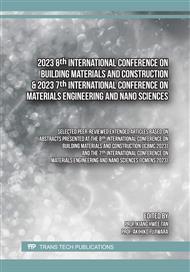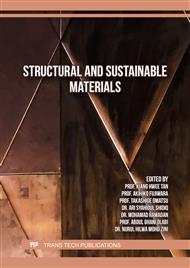p.125
p.131
p.137
p.145
p.155
p.161
p.169
p.179
p.197
Analysis of the Effect of Slenderness Ratio on Nominal Moment in T Section
Abstract:
T-section is similar to the single-symmetry plane. Mostly used in railway engineering, temporary work stands and machinery equipment. In the AISC1999 specification, due to the unfamiliarity with the T-section. Therefore, a conservative definition of a tee fracture is a noncompact section. With the evolution of the times, there are more and more researches on T-section. The T-section is defined as the flange slenderness and the web slenderness. The calculation formula of the nominal moment (Mn) is mainly limited by the slenderness ratio. In recent years, the AISC2017 has added limiting laterally unbraced length for the limit state of yielding (Lp) and limiting laterally unbraced length for the limit state of inelastic lateral-torsional buckling (Lr) to the calculation formula of the nominal flexural strength (Mn) of the T-section. The nominal flexural strength (Mn) shall be the lowest value obtained according to the limit states of yielding moment (Mp), lateral-torsional buckling (LTB). Therefore, this study will analyze and compare the changes in the AISC2017 with the previous norm. Largest laterally unbraced length along either flange at the point of load has 3% difference between AISC2017 and other specifications in plastic moment.
Info:
Periodical:
Pages:
155-160
Citation:
Online since:
October 2023
Authors:
Price:
Сopyright:
© 2023 Trans Tech Publications Ltd. All Rights Reserved
Share:
Citation:



